11612 AFD_class_I superfamilyThalassiosira pseudonana
| Chromosome | Product | Transcript Start | End | Strand | Short Name | |
|---|---|---|---|---|---|---|
| 11612 | chr_20 | AFD_class_I superfamily | 657289 | 662291 | - | AFD_class_I superfamily |
| NCBI ID | Ensembl Genomes exon ID |
|---|---|
| 7447772 | Thaps11612.3, Thaps11612.5, Thaps11612.1, Thaps11612.4, Thaps11612.2 |
| Expression Profile | Conditional Changes | Cluster Dendrogram | Discovered Potential cis-Regulatory Motifs |
|---|---|---|---|
Thaps_hclust_0282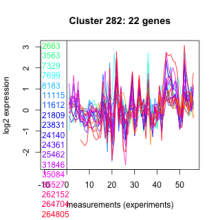 |
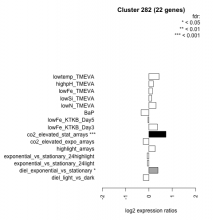 |
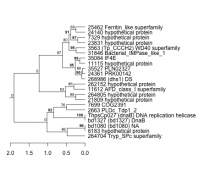 |
   |
| Normalized Mean Residue | Discovered Potential cis-Regulatory Motifs | |
|---|---|---|
|
Thaps_bicluster_0020 |
0.47 |
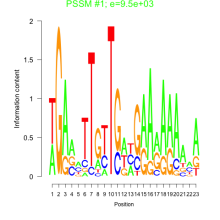 9500 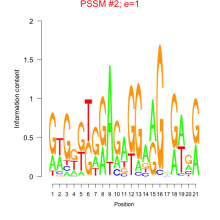 1 |
| T. pseudonana | P. tricornutum | P. tricornutum DiatomCyc | F. cylindrus | Pseudo-nitzschia multiseries | E. huxleyi | C. reinhardtii | A. thaliana | P. sojae |
|---|---|---|---|---|---|---|---|---|
| Not available | PHATRDRAFT_49500 | PHATRDRAFT_49500 | 243715 | Not available | 468086 | Not available | Not available | Not available |
| KEGG description | KEGG Pathway |
|---|---|
| Not available | Not available |

Add comment